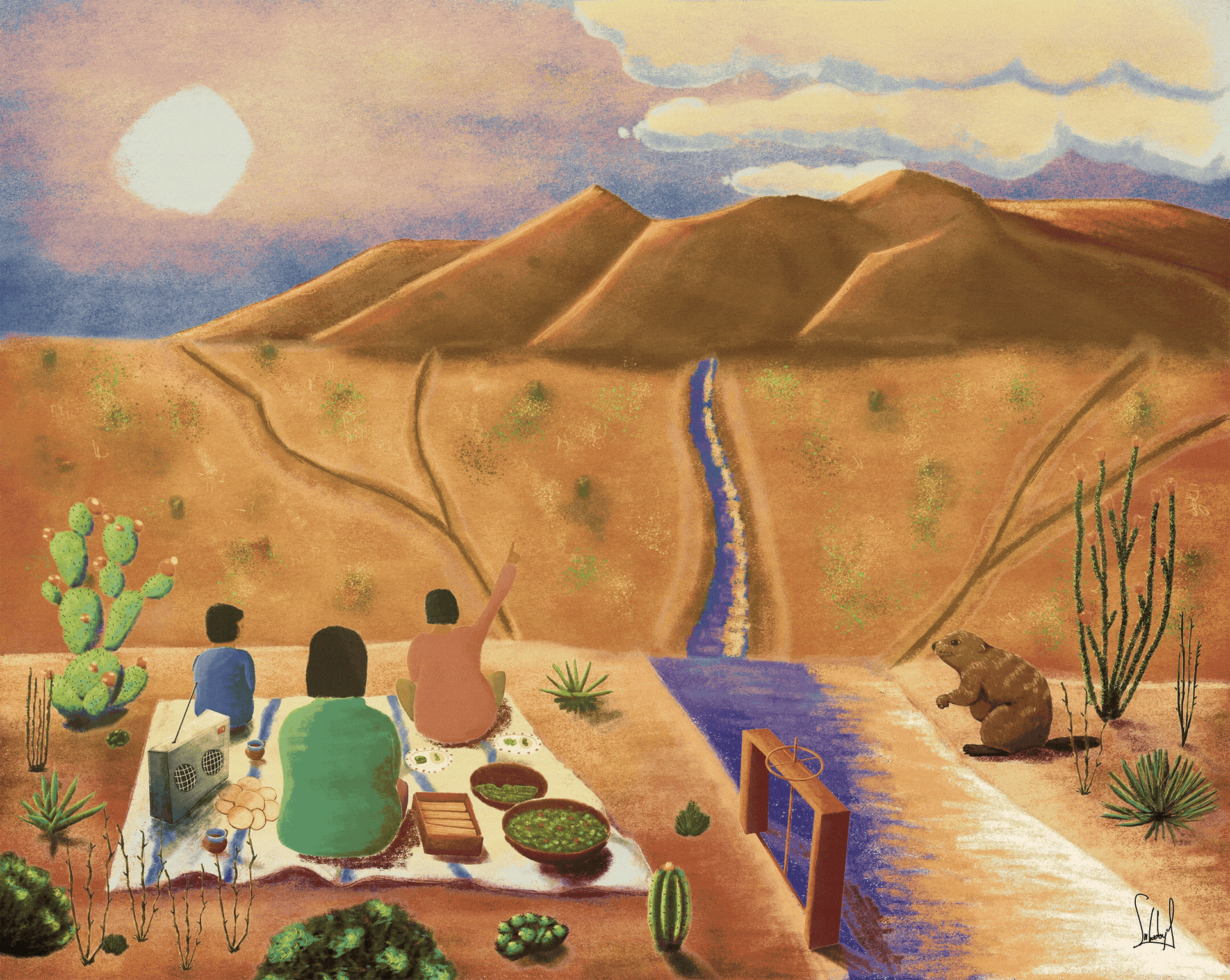

What does water mean to desert dwelling people?
We invite you to explore the illustration below with your mouse and to click on the interactive elements to find seven projects that take aim at the question.


Listen to the narration
As inhabitants of the Chihuahuan Desert, we have a right to know water, its history and stories, the paths it takes to get here, the many policies involved in its distribution, and its contributions to the farmlands and non-human communities that surround us and feed us.
That is why La Semilla’s Food Stories Institute chose water and its intersections with food and farming as the theme for its first cohort. As part of the program, seven storytellers from the Paso del Norte region learned and reflected on the role water has in our food systems, and created projects around the theme.
We piloted the Food Stories Institute because we believe that our community has the right to tell our own food and farming stories, to investigate our own questions and curiosities, and to shape our collective understanding through different ways of knowing and expression. What we’re presenting in the interactive graphic above is the result of months of learning and creation by the cohort.
We want to thank the participants of the cohort: Emma Brown, Abigail Carl-Klassen, Juliza Giron, Julia Hettiger, Amalia Mondragon, Katalina Salas, and Raymond Surya.
We also want to thank all of the people who instructed this cohort.
Julieta Saucedo and Haylee Chavira offered the cohort a tour of La Semilla Community Farm, sharing about its water infrastructure as well as national and regional food systems histories.
Textile artist Janette Terrazas and author Gretchen Groenke shared approaches to documenting river stories.
Rio Bosque offers monthly tours, which the cohort joined to walk and understand what many know as the Rio Grande/Rio Bravo’s “last meander.”
Andie Everett spoke to the group about the significance of the river from her perspective as a Tigua (Ysleta del Sur Pueblo) woman.
Dabi F. Garcia, Alex Griffith, and Yolanda Jaramillo from the New Mexico Acequias Association taught us about acequias and their culture.
Dr. Alex Meyer of UTEP’s Center for Environmental Resource Management shared geologic, technical, and policy histories of the Rio Grande/Rio Bravo.
The cohort also learned from each other all along the way.
Special thanks to the Wildseeds Fund for making this work possible.
And to Ser Godoy for conceiving and coordinating the launch of these stories, and for creating the illustration.